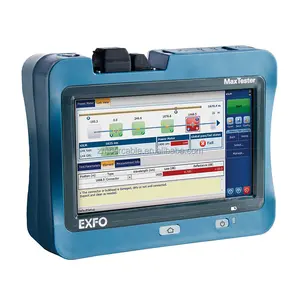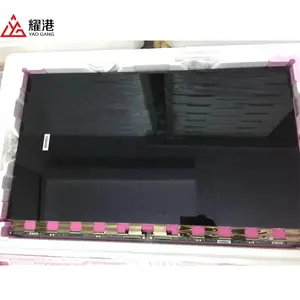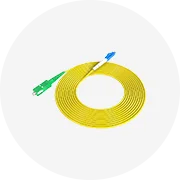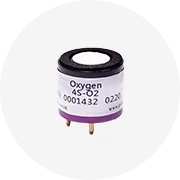Populaire dans votre secteur d’activité





Module de capteur domestique intelligent PDLUX PD-V21 24.125GHz Commutateur de module de capteur Doppler avec facile à connecter au contrôleur
2,15 € - 2,62 €
Commande minimale: 1000 pièces
Expédition par pièce: 1,09 €






Module d'algorithme de mesure intégré 60GHz V-LD1 pour les champs de niveau de liquide et de jauge de niveau Module radar Capteur de niveau de liquide Radar
Prêt à être expédié
73,74 € - 92,41 €
Commande minimale: 1 pièce
Expédition par pièce: 6,42 €







Le système de contrôle d'accès de porte de barrière de boom automatique de détecteur de radar de Tenet 24GHz détectent le véhicule
23,34 € - 26,14 €
Commande minimale: 10 pièces







700-800MHz 50W Module d'amplificateur de puissance Anti-Drone UAV dispositif de brouillage Signal de fréquence système de blocage de Drone
112,01 € - 121,34 €
Commande minimale: 1 pièce
Expédition par pièce: 9,34 €






Module radar à ondes millimétriques 24GHz Indicateur de vitesse de trafic pour capteurs de débit Mesure précise de la vitesse radar
158,67 € - 186,67 €
Commande minimale: 5 pièces
Expédition par pièce: 14,42 €







Tenet 24GHz Anti-écrasement capteur de vitesse de véhicule véhicule routier avertissement de survitesse module de capteur de vitesse radar micro-ondes
23,34 € - 26,14 €
Commande minimale: 10 pièces







Module radar à ondes millimétriques à faible coût 24GHZ FMCW capteur de présence humaine détecteur d'occupation capteur intelligent IOT
2,17 € - 2,32 €
Commande minimale: 1 pièce
Expédition par pièce: 4,04 €






Xiaofeida-capteur de radar 24GHZ, pour voiture, micro-onde, détection de tâches animales, miroir, nouveauté
123,21 € - 128,81 €
Commande minimale: 1 jeu






Capteur Radar en millimètres 24Ghz, pas de boîtier de commande principal, système de détection d'angle mort de voiture Radar à micro-ondes
Prêt à être expédié
79,34 € - 85,87 €
Commande minimale: 2 jeux
Expédition par pièce: 18,67 €






Radar à assistance pour micro-ondes, 24Ghz, 77Ghz, BSD, BSA, RCTA, pièces détachées, kit d'accessoires automobiles, caméra, vidéo, DVR
138,14 € - 140,01 €
Commande minimale: 2 jeux



Module Micro-ondes Capteur De Corps Humain Module 24GHz 24.125g CDM324 Induction Radar Capteur 5.5V
2,99 € - 3,74 €
Commande minimale: 1 pièce





Caméra d'ouverture de porte automatique, radar à capteur de mouvement à infrarouge pour micro-ondes 24Ghz (us104), accessoires, Offre Spéciale
14,01 € - 23,34 €
Commande minimale: 1 pièce
Recherches associées:
capteur radar fmcwcapteur radar pircapteur radar longue portéecapteur radar boschcapteur radar longue distancedétecteur de mouvement radarled plafond radar capteurmalade capteurcapteur radar t8capteur de vitesse radarcapteur radar à micro-ondes 5.8ghzcapteur radar silocapteur radar vegapuls62capteur radar inversecapteur radar pir






Deko YS104-BY — capteur radar 12-36V 24GHZ, puce allemande, pour porte coulissante automatique, capteur de mouvement micro-ondes
Prêt à être expédié
8,41 € - 12,33 €
Commande minimale: 1 pièce
Expédition par pièce: 15,26 €






Hi-Link 24GHz Hi-Link HLK-LD2410S 24G module de capteur radar basse puissance HLK-LD2410S commutateur de capteur de présence humaine capteur intelligent
Prêt à être expédié
2,38 € - 2,53 €
Commande minimale: 1 pièce
Expédition par pièce: 6,09 €






Naiertaidacent — capteur de mouvement PIR, Radar à Micro-onde pour interrupteur, ampoule Led de plafond, 24GHz
Prêt à être expédié
11,28 € - 11,75 €
Commande minimale: 2 pièces
Expédition par pièce: 7,82 €






2021New Modèle 5.8Ghz 24ghz Micro-ondes Capteur Module Capteur Radar
Prêt à être expédié
3,89 € - 5,93 €
Commande minimale: 300 pièces
Expédition par pièce: 0,4761 €






Pdlux PD-V11H Électronique Composante 24GHz Micro-ondes Radar Corps Capteur Modules pour Capteur De Porte Automatique
0,8401 € - 3,27 €
Commande minimale: 1000 pièces





LD2410C capteur de présence de corps humain 24GHz millimètres onde mmWave détecteur de battement de cœur Radar capteur de mouvement Radar
Prêt à être expédié
2,06 € - 2,25 €
Commande minimale: 5 pièces
Expédition par pièce: 0,8587 €



Xiaomi STONKAM — détecteur radar à point mort, 24GHz, système de détection de détection de point mort, radar à micro-ondes
138,14 € - 280,01 €
Commande minimale: 2 pièces






Capteur de présence à contact sec Fonction d'interrupteur à ondes millimétriques 24ghz Radar Capteur d'occupation du corps humain pour éclairage au plafond
30,62 € - 33,23 €
Commande minimale: 2 pièces
Expédition par pièce: 8,98 €






Capteur radar de mouvement Doppler micro-ondes 24GHz pour porte industrielle automatique à vendre
Prêt à être expédié
51,34 € - 65,34 €
Commande minimale: 1 pièce
Expédition par pièce: 14,99 €






Système de détection d'angle mort LCA BSD RCTA 24GHZ Radar Dauble Sensor pour Lexus NX EX UX RX 7inch Safety Driving
Prêt à être expédié
70,01 € - 79,34 €
Commande minimale: 1 pièce
Expédition par pièce: 22,21 €






La reconnaissance multi-voies du capteur radar 24GHz convient à la mesure de la distance et de la vitesse du véhicule
Prêt à être expédié
82,14 € - 100,81 €
Commande minimale: 1 pièce
Expédition par pièce: 3,70 €






Capteur radar de vitesse à ondes étroites 24GHz pour les courbes de route et les avertissements d'intersection
Prêt à être expédié
128,81 € - 184,81 €
Commande minimale: 5 pièces
Expédition par pièce: 5,89 €





Bon prix haute qualité LD2410C capteur de présence humaine 24GHz radar à ondes millimétriques détecteur de rythme cardiaque capteur de mouvement
2,66 € - 3,14 €
Commande minimale: 10 pièces






RX LD2410C corps humain existe capteur 24GHz onde millimétrique mmWave Radar détecteur de battement de coeur Radar capteur de mouvement
Prêt à être expédié
2,33 € - 2,82 €
Commande minimale: 2 pièces
Expédition par pièce: 2,02 €






IP68 étanche 4m gamme NB-IoT sans fil sans contact capteur de niveau de liquide 24GHz détecteur de radar à micro-ondes
Prêt à être expédié
88,67 €
Commande minimale: 1 pièce
Expédition par pièce: 24,67 €

Module de capteur Radar à ondes MM, HLK-LD116S, 24GHz, millimètres, LD116S, 24G PIR, Module de surveillance de mouvement, détection, capteur de Distance
2,81 € - 4,49 €
Commande minimale: 5 pièces






24GHz Tuya WiFi 2in1 mmWave radar capteur de présence humaine et capteur d'occupation humaine pour corps humain capteur de mouvement PIR
16,81 € - 17,74 €
Commande minimale: 5 pièces






Rd-01 original avec antenne tige Radar 24GHz + Module WiFi + BLE Capteur d'ondes millimétriques Capteur radar pour la détection humaine
Prêt à être expédié
2,80 € - 7,00 €
Commande minimale: 10 pièces
Expédition par pièce: 1,15 €






Opérateur de porte automatique, radar à capteur de mouvement à micro-ondes 24ghz
9,34 € - 14,01 €
Commande minimale: 10 pièces






Système d'avertissement de proximité radar 24Ghz Système BSD pour petit capteur de stationnement de détection d'angle mort d'assistance au changement de voie de voiture
Prêt à être expédié
37,25 € - 42,85 €
Commande minimale: 1 jeu
Expédition par pièce: 18,40 €






Système de détection de pixels morts, Radar à base de capteur de mouvement arrière, BSD BSM, à micro-onde, 28/24GHZ
Prêt à être expédié
60,67 € - 72,81 €
Commande minimale: 1 jeu
Expédition par pièce: 20,36 €






Radar à ondes millimétriques LD2420-24G d'origine Module de micro-capteur de mouvement du corps humain Capteur intelligent IOT 24Ghz pour la maison intelligente
1,47 € - 2,11 €
Commande minimale: 5 pièces





Système de radar à micro-ondes universel 24GHz détection de camion mini capteur radar d'angle mort
74,67 € - 109,21 €
Commande minimale: 2 jeux
Expédition par pièce: 34,23 €






Capteur radar de retour de vitesse et de direction du trafic haute performance 24GHz pour lampadaire intelligent
144,67 € - 154,01 €
Commande minimale: 1 pièce






BGT RS232 RS485 4-20mA 20ms 7-30 VDC Alimentation IP68 24GHz Radar Vitesse de L'eau Capteur Compteur pour Rivière Lac Surveillance
Prêt à être expédié
1 353,35 € - 1 390,68 €
Commande minimale: 1 pièce
Expédition par pièce: 22,22 €
Meilleures catégories
Concernant 24ghz capteur radar
2339 24ghz capteur radar sont disponibles sur Alibaba.com. Une large gamme d'options de 24ghz capteur radar s'offre à vous comme des étanche, des nuit vision et des parking ligne. Vous avez également le choix entre un vision, un golf et un 3 24ghz capteur radar, des universel, des vw et des pour toyota 24ghz capteur radar et si vous souhaitez des 24ghz capteur radar 170, 120 -170 ou 360 ° vue d'oiseau.





































